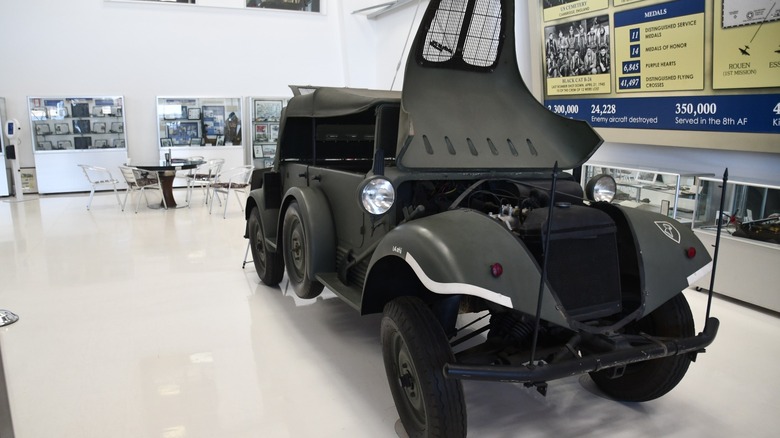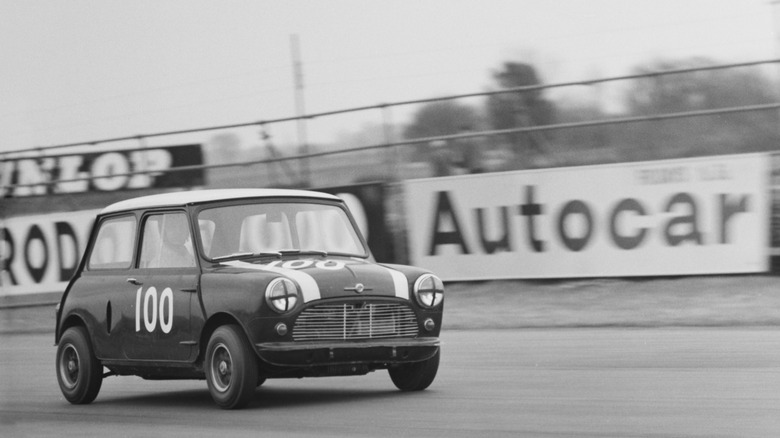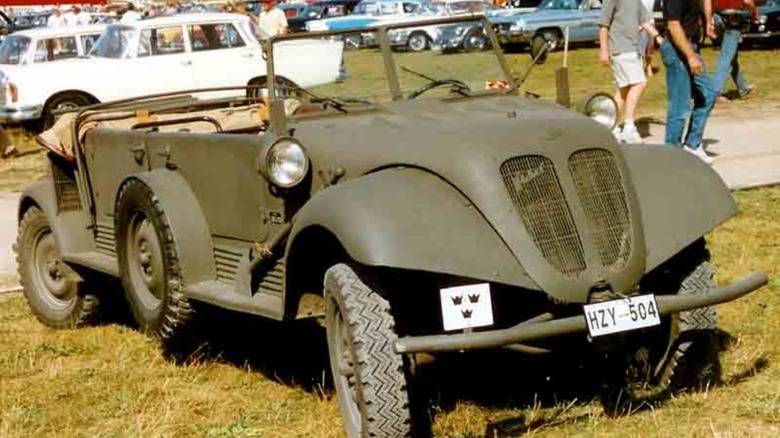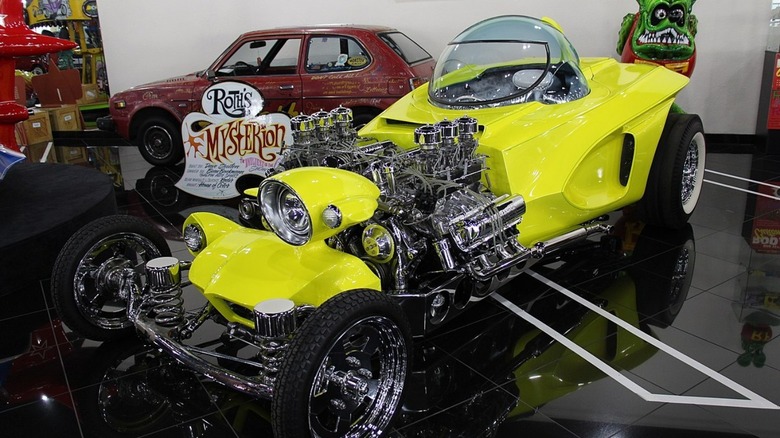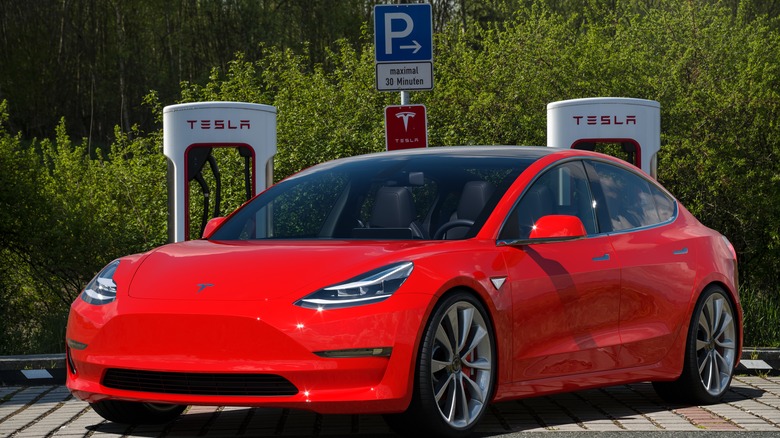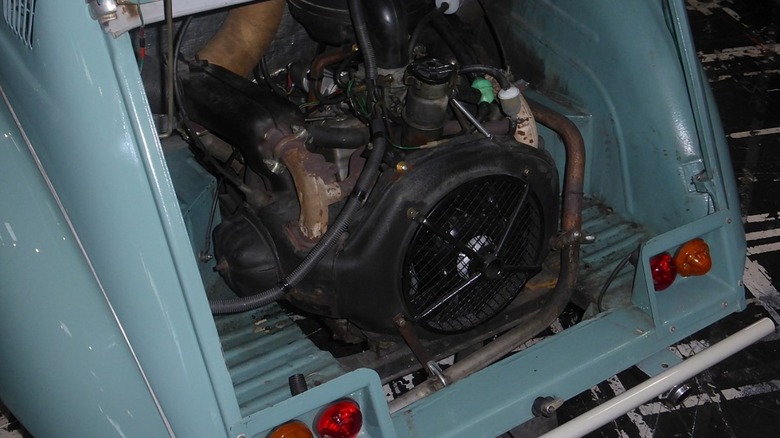5 Cars That Have Two Engines Under The Hood
You don't need to be an experienced mechanic, or even show much interest in cars at all, to be able to identify the basics that make up a typical car: four wheels, an engine, a wheel, a trunk, a hood. The fact is, though, this gross simplification doesn't always stand, because certain models break from this norm. The British icon that is the Reliant Robin is one of many three-wheeled cars on the market while the "American Dream," a unique one-off super limo created by Jay Ohrberg in 1986 and deemed the longest car in the world, had 26 wheels.
There's something else very special about this particular creation, on top of the ludicrous fact that it's a 100-foot mega limo. It sports a pair of engines, or, more accurately, a pair of pairs: Four V8 engines in total are spread between the front and back of the American Dream.
Of course, this is a very unusual case and is not a necessary set up for a commercial model, but there are regular cars that have been designed to incorporate twin engines in their designs as well. From the rather majestic Twini Mini to a modern Tesla, here are some models that were designed in this fashion, what became of them, and why they warranted two engines in the first place.
[Image by Ducatipierre via Wikimedia Commons | Cropped and resized | CC BY-SA 4.0]
The Twini Mini
The aforementioned Reliant Robin may be a British classic, but there's another model that also deserves that title: the Mini. It was a small and simple yet elegant model, far from an automobile powerhouse but boasting a brilliant design from its first iteration. British Motor Corporation's Leonard Lord strove for a practical, compact design to address the gas rationing that afflicted Britain in the late 1950s, and the Mini was the result. Every inch of space was utilized in its diminutive frame, with Automobile Magazine noting of the original design that "the 'mini' car would be only 10 feet long, but the passenger and cargo compartments would measure 8.5 feet in length."
The Mini was produced until the year 2000, and over its decades of existence, several revisions to the design and new models were produced. One was the Mini Moke, conceptualized as a military transport akin to the Jeep. The Moke family, interestingly, was at the forefront of the experimental effort to develop a double-engined Mini, which was delightfully known as the Twini Mini.
Though it was an experimental effort that never entered mass production, it was intended to be a powerful-for-its-size racer and had some success when it appeared in the Targa Florio in 1963. This Twini Mini created by the Downton Engineering company was driven by John Whitmore and Paul Frere.
Tempo G1200
Military transport vehicles, a niche the Mini Moke was originally intended to help fill, don't generally need to concern themselves with elegance or aesthetics. Rugged practicality, versatility, and power are key to getting supplies, equipment, and personnel across terrain that is often unpredictable and hazardous. Just as with the Twini Mini, the earlier Tempo G1200 took the approach that two engines would be more powerful than one.
The Tempo G1200 is a unique machine of German design created in the mid-1930s. Its 600cc engine was nothing to scoff at during the era, and this formidable-looking vehicle boasted one llo twin-cylinder courtesy of the company's V-600 civilian car for each of its axles, powering it to a combined 38 horsepower.
Though this model was created during the early stages of World War II, it was only produced in very small numbers and could not compete with Volkswagen's Kübelwagen as a military transport. The Kübelwagen boasted long-stroke suspension and bucket seats, making it relatively luxurious for a vehicle of its type at the time, but the largely forgotten G1200, capable of a rather pacey 42 mph and sporting its unusual twin-engine setup, was an intriguing machine, too.
[Image by Lars-Göran Lindgren Sweden via Wikimedia Commons | Cropped and resized | CC BY-SA 3.0]
The 'Mysterion' hot rod
Some may know Mysterion as a very specific guise of the Marvel character Mysterio, often found tormenting Spider-Man. For fans of the outlandish creations of custom car designer Ed Roth, however, the name has another meaning. Hot rods are typically cars that have been heavily tinkered with in order to enhance their speed and other specs. As has become something of a theme of the cars featured here, the school of thought with Mysterion might appear to be that two engines would offer more power, but one of Roth's custom hot rod's engines had a bit of a secret.
Roth built Mysterion in 1963, inspired by dragsters that were bucking the solo-engine convention around this time. (Drag racing legend Tommy Ivo began graduating from a two-engine machine to a four-Buick-V8 powerhouse he dubbed "Showboat" in 1961.) Mysterion was simply built to be on display, though, a sentiment reflected in its bright yellow color scheme and the fact that its pair of Oldsmobile V8s from the previous decade were too heavy for its primarily-fiberglass and plaster body.
Ultimately, Mysterion was damaged as it was transported between events. The weight of its engines — only one of which was actually functional with the other only serving to hide the alternator — was too much for it. Nonetheless, it's the kind of custom car legend that George Barris, fellow custom car modder extraordinaire, would be proud of.
[Image by Sicnag via Wikimedia Commons | Cropped and resized | CC BY-SA 2.0]
Tesla Model S And Model 3
The unique world of the twin-engine vehicle isn't one exclusive to ICEs. This entry operates in a different market but also has two engines, or, technically, two electric motors. Tesla is a huge name in the EV sphere, so it's unsurprising that its repertoire of models adopts a lot of EV conventions. Dual-motor EVs aren't as unusual as dual ICE setups, and the company's Model S and Model 3 families both offer this configuration.
Tesla dubs the Dual Motor Model S "a categorical improvement on conventional all-wheel drive systems," offering "unparalleled traction control in all conditions" while not sacrificing efficiency as a single engine splitting focus to enable all-wheel drive would.
The advantage of this system is that it allows the front to be driven from the front and the rear to be driven by the rear. Tesla reports that the setup helps push the formidable Performance Model 3 to top out at 163 mph and achieve a horsepower of 510. Not only is it a dual-motor model, it's also equipped with a second display so that passengers in the back can also change the settings and activate the features they need.
Citroën 2CV Sahara AZ 4x4
Rear-wheel drive and front-wheel drive have their advantages and their shortcomings. A front-mounted engine, for instance, may provide beneficial weight distribution for those drivers who find themselves battling through inclement weather systems frequently, while rear-wheel drive vehicles can offer more grunt in the back (for towing purposes for instance). Engine placement has a key part to play in the options available, and in the 1950s, Citroën designed an outlandish model that aimed to offer drivers more versatility: the 2CV Sahara AZ 4x4.
Its name is something of a mouthful, and that's because it was a peculiar twist on an earlier, rather conventional model: the 2CV. This modest machine began production in 1948 and arrived with the sort of humble engine that might be expected of the troubled post-war period: a 0.4-liter model that could output 17 pound-feet of torque and 10 horsepower. The front-wheel drive machine was a practical economy car that arrived at just the right time, and over its long life, its humble qualities allowed it to endure and ship around 9 million units before manufacturing ceased in 1990.
Along the way, the experimental Sahara AZ 4x4 was added to the family. An attempt to challenge the dominance of other 4x4 models, it answered the question of AWD access with a second engine and the option to switch between using either or both via a lever.
[Image by Andrew Bone via Wikimedia Commons | Cropped and resized | CC BY-SA 2.0]
